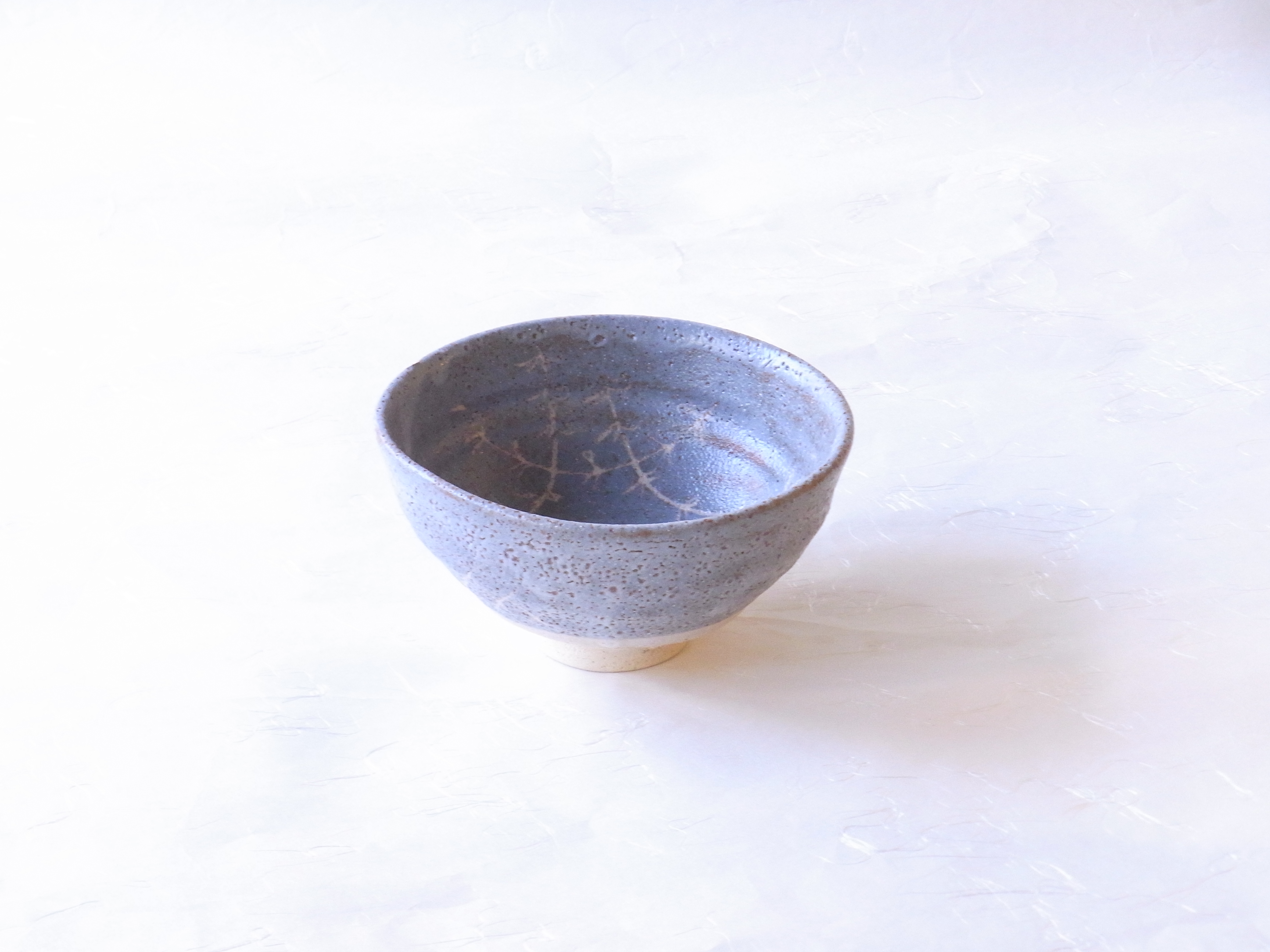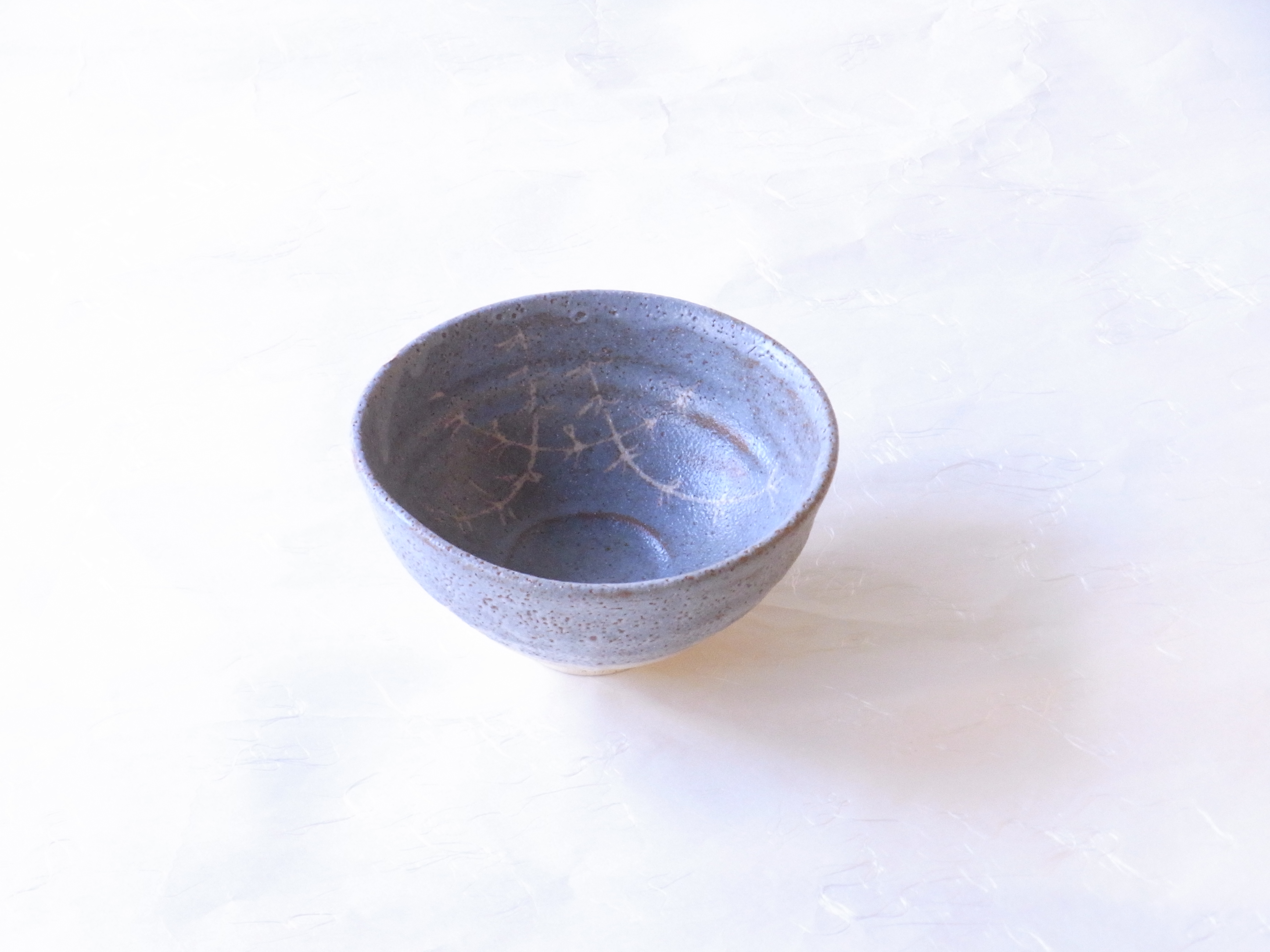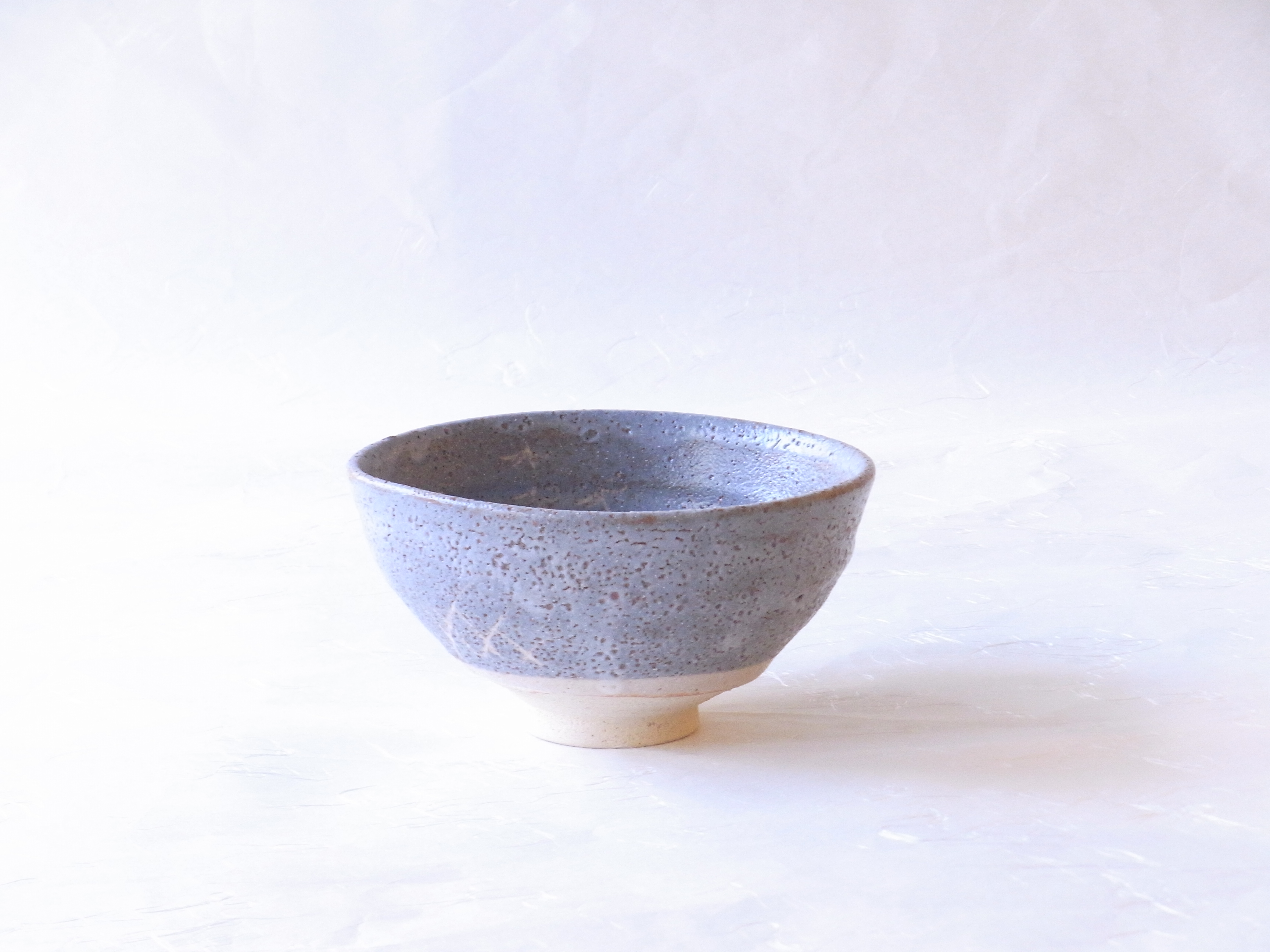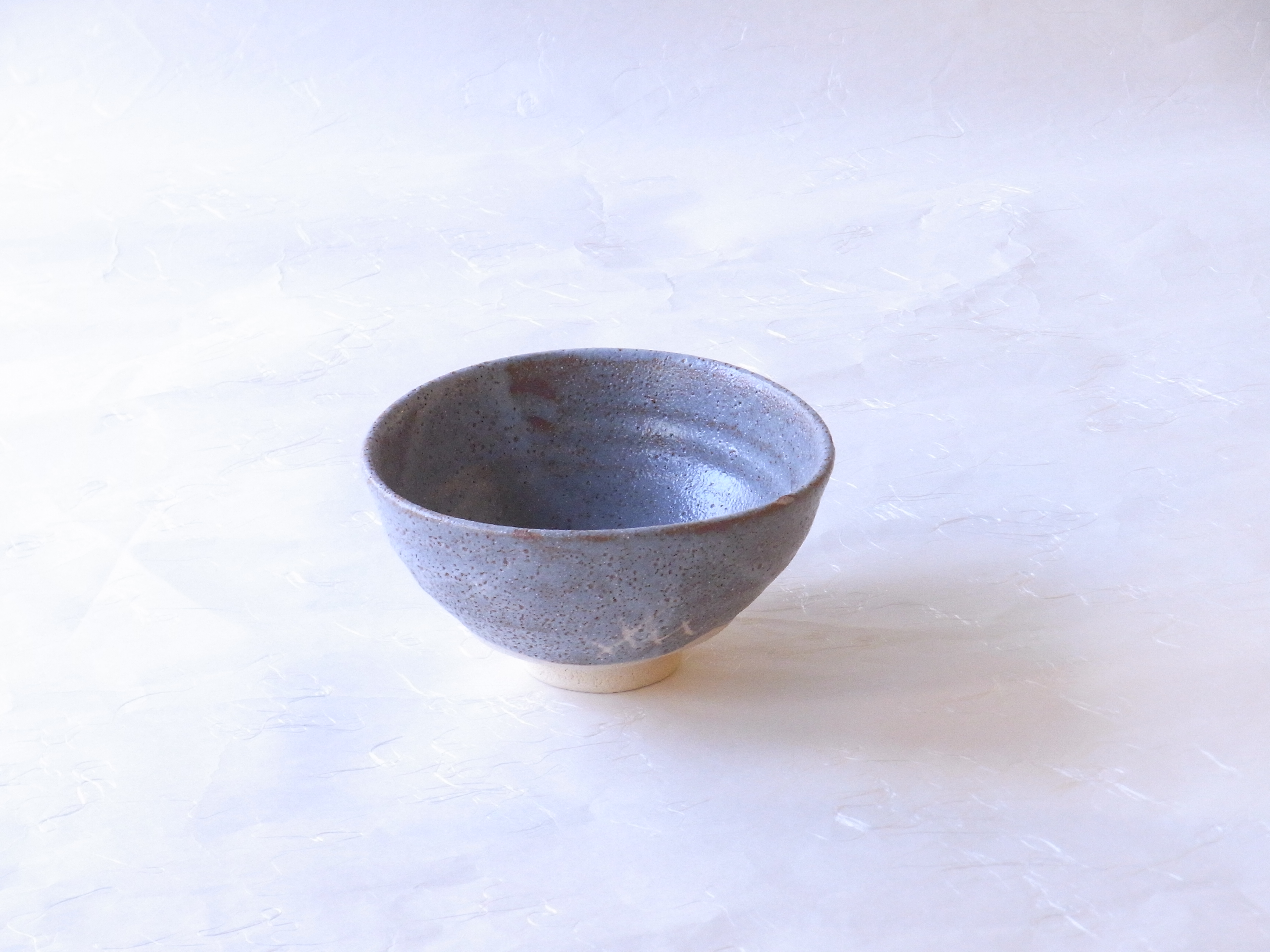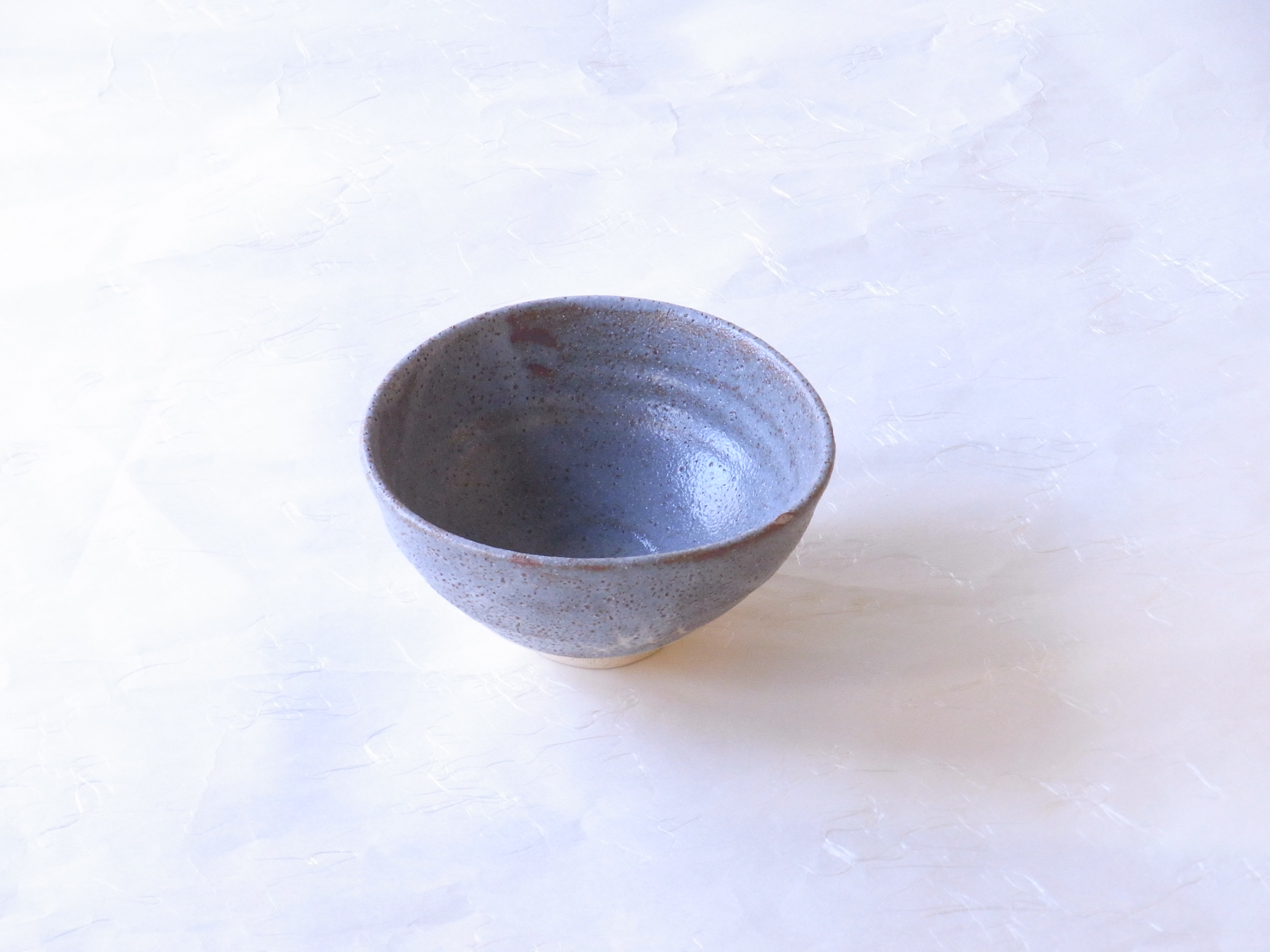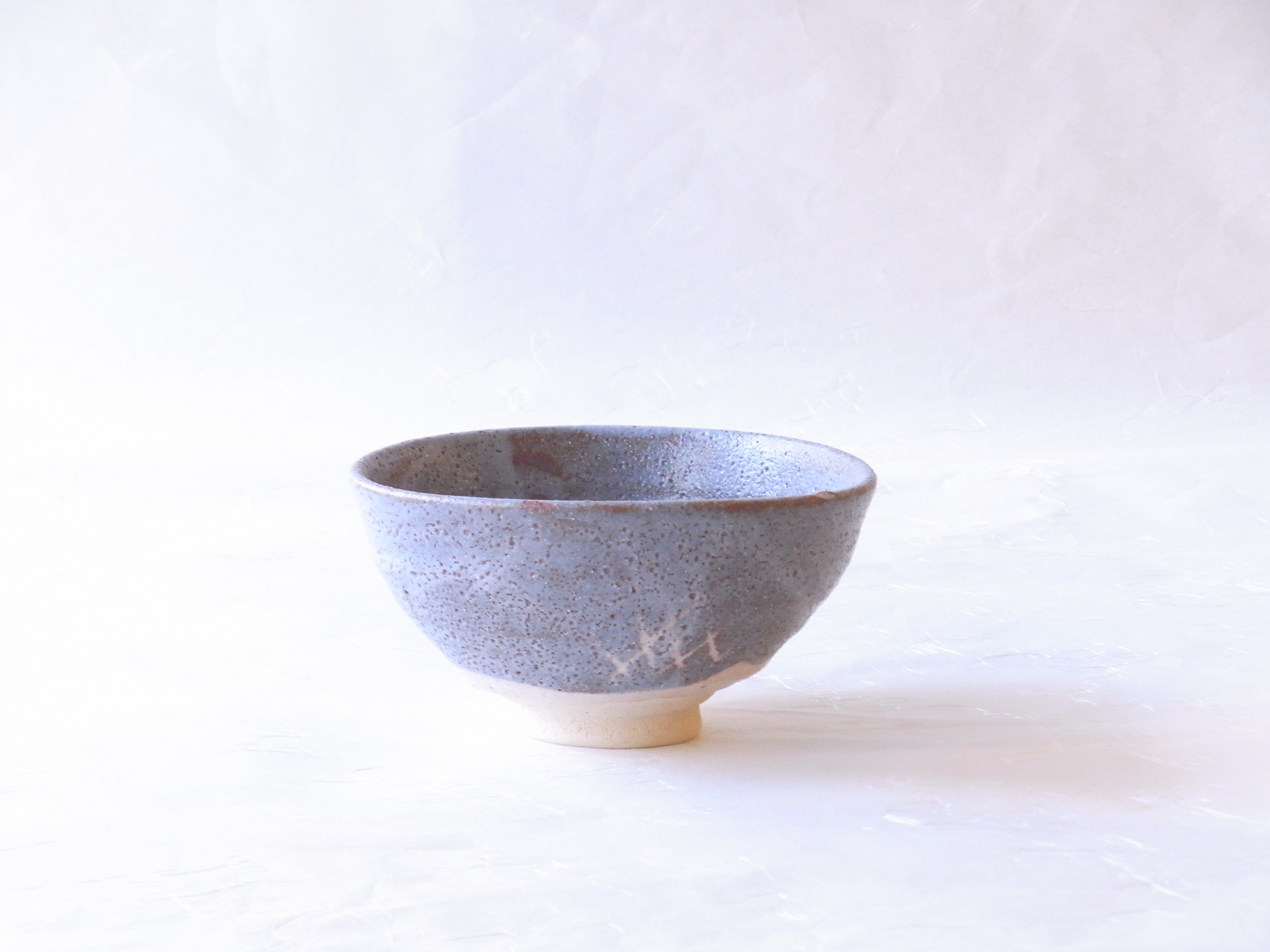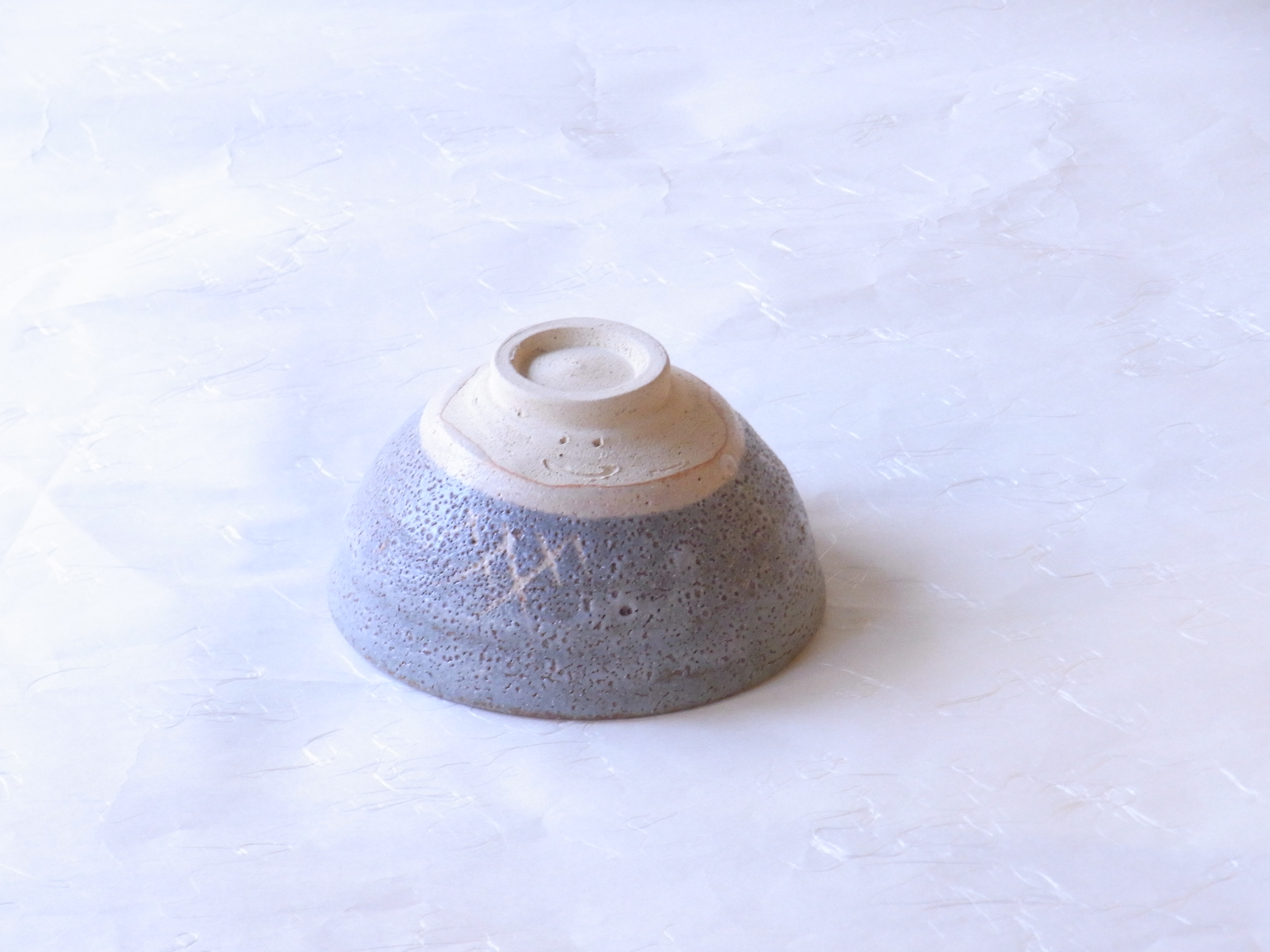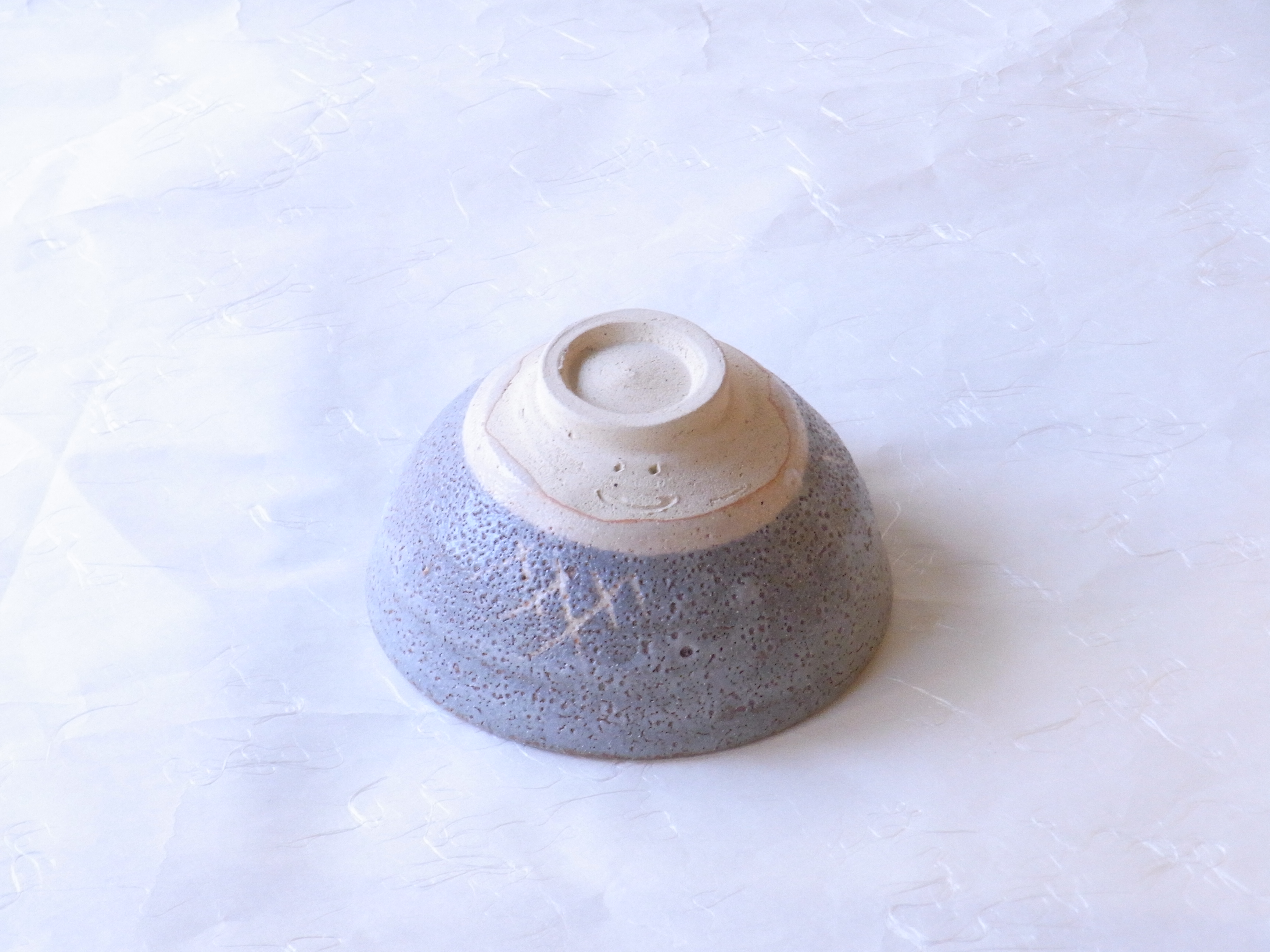美濃焼から桃山窯 林英仁 作の抹茶碗のご紹介です。
岐阜県多治見市生まれ、祖父の加藤十右エ門に師事し、桃山窯を開窯しました。
岐阜を代表する焼物、志野の抹茶碗です。
これは鼠志野といって、鼠色の釉薬が使われています。
白い文様が茶碗の内側と外側にも少し描かれていますが
全体に文様は少なめでシンプルな構図になっています。
ピンホールが全体に無数にあいており、中には大きなものが複数あり
ざっくりと荒々しい風合いになっています。
白土を使っており、ずっしりと重量感のある抹茶碗です。
所々に茶色く変色した箇所があり、焼き物らしい雰囲気があります。
形は志野によく見られる切立型ではなく、もう少し口が開いており
口は若干変形しており、志野としては、あまりない珍しい形です。
随所にこの作家ならではの作風が表れています。
幅 14.5㎝ × 奥行 14㎝ × 高さ 7.5㎝
It is an introduction of matcha bowl of Momoyama kiln Hayashi Hidehito from Mino ware.
Born in Tajimi City, Gifu Prefecture, he studied under his grandfather, Kato Juright Emon, and opened the Momoyama Kiln.
It is a matcha bowl of Shino which is the pottery which is the representative of Gifu.
This is called rat shino, and the glaze of the rat color is used.
The white pattern is drawn a little on the inside and outside of the teacup.
The pattern in the whole has become a simple composition with few.
There are countless pinholes throughout, and there are several large ones in them.
It has become a rough texture roughly.
It is a matcha bowl that uses clay and has a heavy feeling.
There is a place that was discolored brown in some places, and there is an atmosphere which seems to be pottery.
The shape is not a cut-out type often seen in Shino, and the mouth is opened a little more
The mouth is slightly deformed, and it is a rare shape not so much as Shino.
The style unique to this writer is shown everywhere.
介紹從米諾陶器到莫莫山弘治的綠茶碗。
出生于岐府縣塔吉米市,在祖父加藤十右門學習,並開了莫莫山。
這是吉福的陶器,石野的抹茶碗。
這被稱為”Shino”,使用釉料。
白色圖案在茶杯的內部和外部被畫得有點
整個句子是小和簡單的構圖。
針孔是無數的,有幾個大
它已成為一個粗糙的質地。
它使用粘土,它是一個抹茶碗與厚和重量的感覺。
有一個地方,棕色變色的地方,有一個陶器的氣氛。
形狀不是在Shino中常見的切口類型,而是稍微張開的嘴。
嘴是稍微變形的,作為Shino,這是一個不尋常的形狀,不是很多。
在這裡,這個作家的獨特風格隨處可見。
介绍从米诺陶器到莫莫山弘治的绿茶碗。
出生于岐府县塔吉米市,在祖父加藤十右门学习,并开了莫莫山。
这是吉福的陶器,石野的抹茶碗。
这被称为”Shino”,使用釉料。
白色图案在茶杯的内部和外部被画得有点
整个句子是小和简单的构图。
针孔是无数的,有几个大
它已成为一个粗糙的质地。
它使用粘土,它是一个抹茶碗与厚和重量的感觉。
有一个地方,棕色变色的地方,有一个陶器的气氛。
形状不是在Shino中常见的切口类型,而是稍微张开的嘴。
嘴是稍微变形的,作为Shino,这是一个不寻常的形状,不是很多。
在这里,这个作家的独特风格随处可见。
